महाराष्ट्र का राज्य पशु "विशालकाय गिलहरी"
स्थानीय नाम: शेखरू (मराठी), केन्जिरी (कूर्गी) वैज्ञानिक नाम: राटुफा इंडिका
मालाबार विशालकाय गिलहरी, जिसे भारतीय विशालकाय गिलहरी (Indian Giant squirrel) के नाम से भी जाना जाता है, महाराष्ट्र का राज्य पशु है। भारतीय विशाल गिलहरी की आदतों और आवास में मिश्रित पर्णपाती और नम सदाबहार वन, साथ ही उष्णकटिबंधीय और वर्षावन शामिल हैं।
महाराष्ट्र के राज्य पशु आर्बरियल हैं, वे दिन और रात के दौरान अपना अधिकांश समय पेड़ों पर बिताते हैं। भारतीय विशाल गिलहरी का वजन 1.5 से 2.5 किलोग्राम के बीच होता है। सिर से शरीर तक की लंबाई लगभग 25 सेमी से 45 सेमी होती है। पूंछ की लंबाई 20 सेमी से 40 सेमी के बीच होती है। शरीर का रंग गहरे लाल से भूरे तक होता है, पेट पर सफेद रोएँ होते हैं। अगले पैर और निचले हिस्से आम तौर पर क्रीम या गंदे सफेद होते हैं।
एक भारतीय विशालकाय गिलहरी के कान गोल और छोटे होते हैं। गाल, छाती, जांघिया क्रीम, सफेद या नारंगी हैं। आँखें या तो चमकीली गहरी भूरी या हल्की भूरी हैं, जबकि होंठ और नाक गुलाबी हैं। उनके मुंह के आसपास और नाक के पीछे बहुत लंबे बाल होते हैं। उनकी एक शक्तिशाली, लंबी पूंछ होती है और सिरे पर रंग मलाईदार सफेद से लेकर हल्के भूरे रंग तक होता है। प्रजनन के मौसम के दौरान, नर सक्रिय रूप से मादाओं के लिए प्रतिस्पर्धा में लगे रहते हैं, और जोड़े लंबे समय तक एक साथ रह सकते हैं। वे स्वाभाविक रूप से शर्मीले और सावधान होते हैं।
विशालकाय गिलहरी सर्वाहारी होते हैं। फूल, फल, अंडे, कीड़े, पत्तियां और यहां तक कि छाल भी खाते हैं। वे 6 मीटर या उससे अधिक दूरी तक छलांग लगाकर एक पेड़ से दूसरे पेड़ तक छलांग लगा सकते थे। इसके मुख्य शिकारी, शिकारी पक्षी और तेंदुआ हैं। पुणे में भीमाशकर वन्यजीव अभयारण्य इस प्रजाति की अच्छी आबादी के लिए जाना जाता है।
वितरण: भारतीय विशाल गिलहरी भारत के लिए स्थानिक है और दक्षिणी और मध्य भारत (पश्चिमी घाट और पूर्वी घाट और सतपुड़ा पर्वतमाला के कुछ हिस्सों) में अलग-अलग हिस्सों में पाई जाती है। प्रकृति में वृक्षीय, ये गिलहरियाँ शुष्क और नम पर्णपाती, अर्ध-सदाबहार और सदाबहार जंगलों में ऊपरी छतरियों में निवास करती हैं। इसके बड़े, शक्तिशाली पंजे इसे पेड़ों की छाल और शाखाओं को पकड़ने में मदद करते हैं। वे ऊँचे, प्रचुर शाखाओं वाले पेड़ों पर कई ग्लोब-आकार के घोंसले बनाते हैं और शायद ही कभी ऊँचे जंगल की छतरी से नीचे उतरते हैं। गिलहरी तीखी आवाजें निकालती है और ऊंची आवाज वाली अलार्म कॉल करती है जो उन जंगलों में गूंजती है, जहां यह पाई जाती है।
संरक्षण: निवास स्थान का विनाश, निवास स्थान में परिवर्तन जैसे विखंडन, सड़कों और बिजली लाइनों का निर्माण, और वनों की कटाई भारतीय विशाल गिलहरी आबादी के लिए एक महत्वपूर्ण खतरा है। ZSI के एक अध्ययन से यह भी पता चला है कि अवैध शिकार, विशेष रूप से पूर्वी घाट में, जहां नई मानव बस्तियां बनाई गई हैं, भी इस प्रजाति के लिए एक गंभीर खतरा पैदा कर रहा है।
भारतीय विशाल गिलहरी बीज फैलाव में मदद करके जंगलों की पारिस्थितिक प्रणाली को संतुलित करने में एक आवश्यक भूमिका निभाती है, जिससे अप्रत्यक्ष रूप से देशी वन्यजीव आबादी का समर्थन होता है और मानव-वन्यजीव संघर्ष कम होता है। गिलहरी भी एक संकेतक प्रजाति है और इसकी उपस्थिति एक स्वस्थ जंगल का संकेत देती है। भारतीय विशालकाय गिलहरी को IUCN की संकटग्रस्त प्रजातियों की लाल सूची में "सबसे कम चिंताजनक" के रूप में सूचीबद्ध किया गया है। यह भारतीय वन्यजीव (संरक्षण) अधिनियम, 1972 की अनुसूची II और CITES के परिशिष्ट II में भी सूचीबद्ध है।
आप सभी ने छोटे आकार की गिलहरी को उसके भूरे रंग के शरीर और धारियों के साथ कई बार देखा होगा, लेकिन, कभी मालाबार विशालकाय गिलहरी (Malabar Giant squirrel) को देखने का मौका शायद ही कुछ लोगों को मिला होगा। यहाँ एक वीडियो है जो आपको हैरान कर देगा। आईएएस अधिकारी सुप्रिया साहू (IAS officer Supriya Sahu ) ने ट्विटर पर मालाबार की विशालकाय गिलहरी का एक वीडियो शेयर किया था, जिसमें वो एक झटके में छलांग लगाते और पेड़ों पर चढ़ते हुए दिखाई दे रही है। फुटेज को तमिलनाडु (Tamil Nadu) के कुन्नूर में रिकॉर्ड किया गया था।
English Translate
State Animal of Maharashtra "Giant Squirrel"
Scientific Name: Ratufa Indica
The Malabar giant squirrel, also known as the Indian giant squirrel, is the state animal of Maharashtra. The habits and habitat of the Indian giant squirrel include mixed deciduous and moist evergreen forests, as well as tropical and rainforests.
The state animals of Maharashtra are arboreal, they spend most of their time in trees during the day and night. The Indian giant squirrel weighs between 1.5 to 2.5 kg. The length from head to body is approximately 25 cm to 45 cm. The length of the tail ranges from 20 cm to 40 cm. The body color ranges from dark red to brown, with white fur on the abdomen. The forelegs and lower parts are generally cream or off-white.
The ears of an Indian giant squirrel are round and small. Cheeks, chest, underparts are cream, white or orange. The eyes are either bright dark brown or light brown, while the lips and nose are pink. They have very long hair around their mouth and behind their nose. They have a powerful, long tail and the color ranges from creamy white to light brown at the tip. During the breeding season, males actively engage in competition for females, and pairs may remain together for long periods. They are naturally shy and cautious.
Giant squirrels are omnivores. Eat flowers, fruits, eggs, insects, leaves and even bark. They could jump from one tree to another by jumping distances of 6 meters or more. Its main predators are birds of prey and leopard. Bhimashkar Wildlife Sanctuary in Pune is known to have a good population of this species.
Distribution: The Indian giant squirrel is endemic to India and is found in isolated parts of southern and central India (Western Ghats and parts of the Eastern Ghats and Satpura ranges). Arboreal in nature, these squirrels inhabit the upper canopy in dry and moist deciduous, semi-evergreen and evergreen forests. Its large, powerful claws help it grip the bark and branches of trees. They build numerous globe-shaped nests in tall, abundantly branched trees and rarely descend below the high forest canopy. The squirrel makes shrill calls and high-pitched alarm calls that echo throughout the forests where it is found.
Conservation: Habitat destruction, habitat alteration such as fragmentation, construction of roads and power lines, and deforestation pose a significant threat to the Indian giant squirrel population. A ZSI study also revealed that poaching, especially in the Eastern Ghats, where new human settlements have been built, is also posing a serious threat to this species.
The Indian giant squirrel plays an essential role in balancing the ecological system of forests by helping in seed dispersal, thereby indirectly supporting native wildlife populations and reducing human-wildlife conflict. The squirrel is also an indicator species and its presence indicates a healthy forest. The Indian giant squirrel is listed as "Least Concern" on the IUCN Red List of Threatened Species. It is also listed in Schedule II of the Indian Wildlife (Protection) Act, 1972 and Appendix II of CITES.
भारतीय राज्य के राजकीय पशुओं की सूची || List of State Animals of India ||
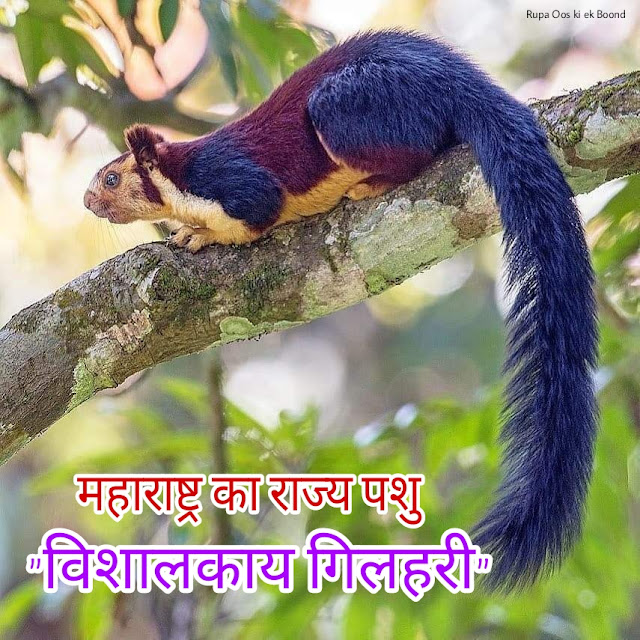
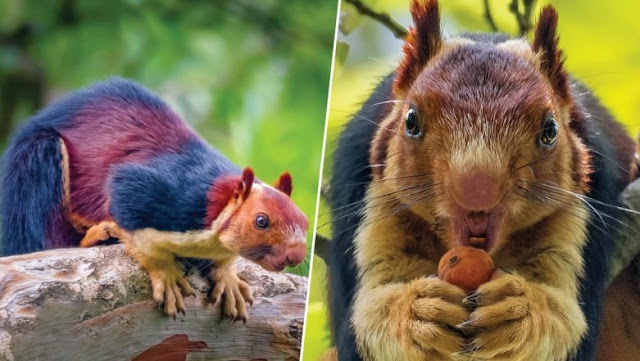
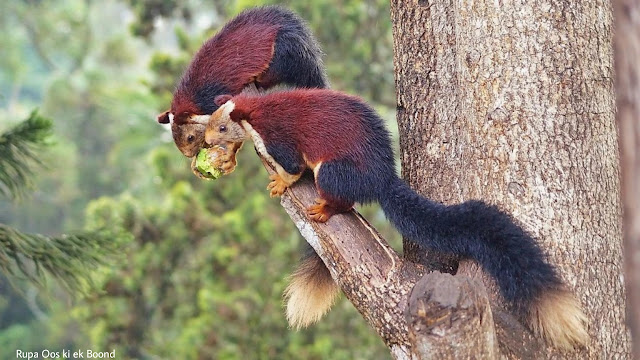
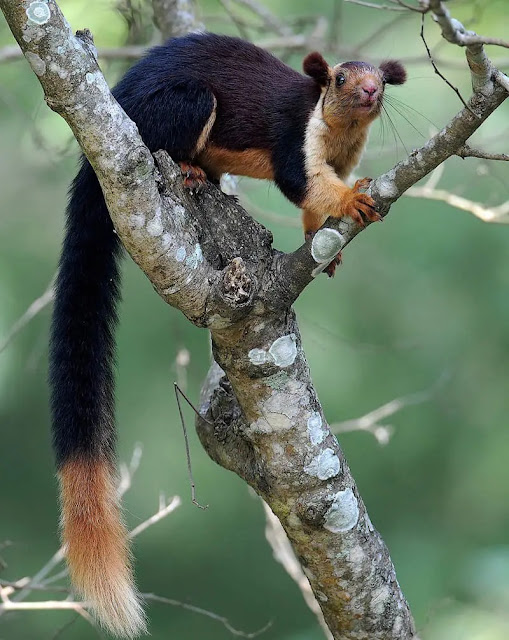

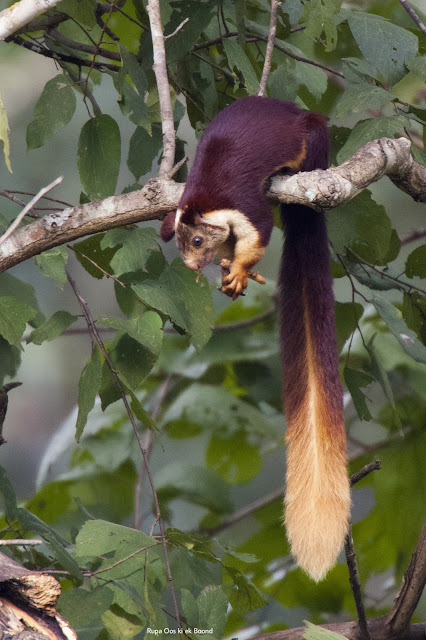
Ultimate information
ReplyDeleteरोचक जानकारी🙏🏻✍️
ReplyDeleteबढिया
ReplyDeletenice information
ReplyDelete🙏🙏💐💐शुभरात्रि 🕉️
ReplyDelete🚩🚩जय श्री हरि 🚩🚩
👍👍👍रोचक व महत्वपूर्ण जानकारी शेयर करने के लिए आप का बहुत बहुत धन्यवाद 💐💐
Nice information
ReplyDeleteVery Nice Information 👌🏻🙏🏼
ReplyDeleteअच्छी जानकारी
ReplyDeleteVery nice
ReplyDeleteBeautiful.
ReplyDelete